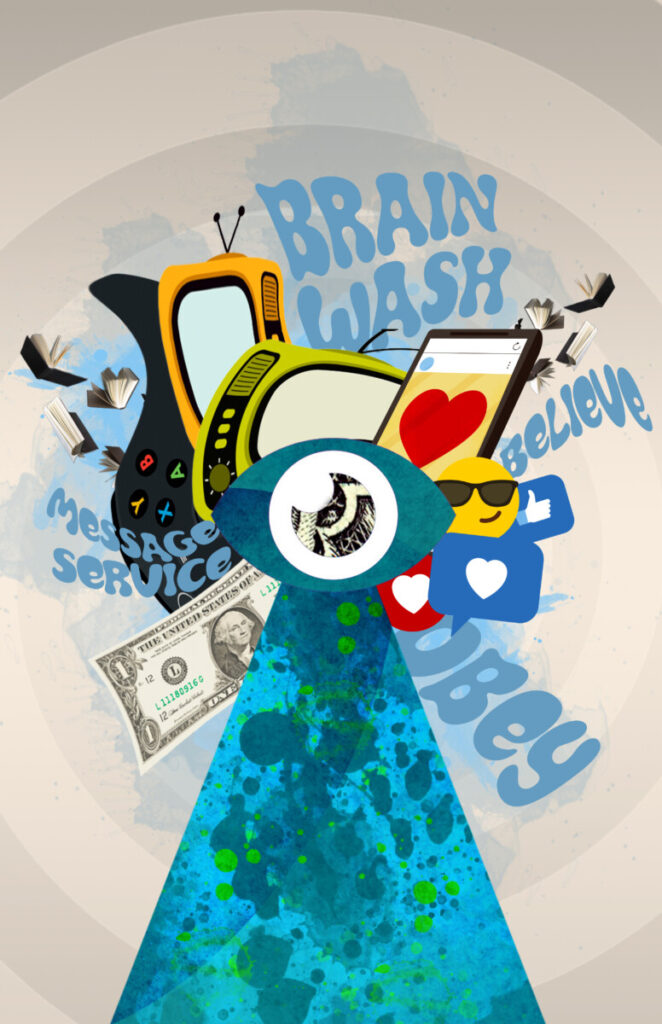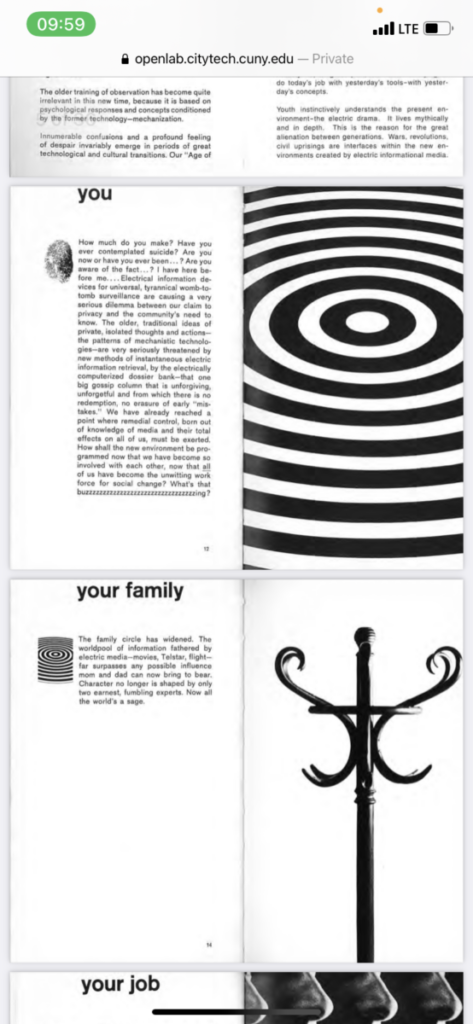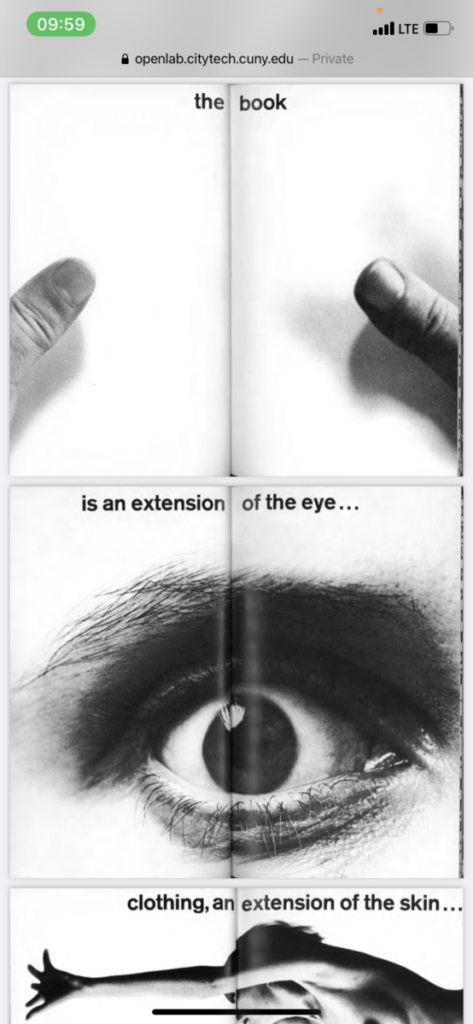The readings were somehow difficult for me to understand. What the three articles had in common is talking about technology, and how it affected us as artists. In order to develop and advance, artists/ designers must realize their responsibilities in society. Artists must collaborate, examine, and not take everything as granted but think about how to take what we have and make it better based on society.
When an invention becomes part of everyday life, it is time for a designer to think how to improve. Books back then were only for the rich and educated. However, over time more and more people learned to read and the market for books increased. Yet, some designers understood the difference between having just words, or having words and illustrations.
Designers understood that when you have just words in a book, it may not be understood by everyone, where if you add illustrations, colors, shapes, even people who don’t necessarily speak the language may understand what it is about. This way of thinking led designers to understand marketing better. Automobiles became an inseparable part of society, and the demand to read fast grew. Meaning, posters, or billboards, didn’t have to have paragraphs on paragraphs explaining the product or the services, Posters meant to be seeing fast while in motion, therefore with the way technology advanced, it required printing, marketing, illustration, copywriting, or even engineering to step forward.
With that in my, the Lissitsky_OurBook, reminded me of an issue i’ve heard not too long ago. Many people in the U.S are not reading proficient, as a matter of fact the statistics show the way less 50% of the population is on their reading level/ grade. Millions of dollars are being poured into the education system with no lack. Long story short, a designer noticed that some books have certain typefaces, with specific leading and kerning, which affect reading, especially among the younger generation who’s just learning how to read.
With a collaboration of engineers, and designers a research was conducted among 20 students, and the results prove what they all suspected. Similar to eyeglasses prescription, students needed their own reading prescription, meaning ‘typeface’, ‘leading’, ‘kerning’, etc. Thanks to the technology we have today, setting a typeface that would be customized to the reader is not as a big deal as it used to be. Now, er can adjust the text so reading proficiency would increase, which only happened thanks to a designer who didn’t take books as what they are, but thought about their responsibility in society, and wanted to improve the product itself based on demand.








Recent Comments